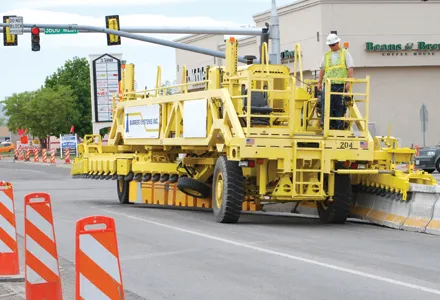The UK's new Hindhead Tunnel is now open to traffic. The ?420 million (£371 million) tunnel runs under the Devil's Punch Bowl in Surrey and will reduce congestion, while boosting safety on the busy A3 route.
February 27, 2012
Read time: 2 mins
The UK's new Hindhead Tunnel is now open to traffic. The €420 million (£371 million) tunnel runs under the Devil's Punch Bowl in Surrey and will reduce congestion, while boosting safety on the busy A3 route. The 1.8km tunnel has taken four-and-a-half years to construct and lies on the London-to-Portsmouth A3 road. The twin-bore tunnel is one of the longest in England and will be used by 30,000 vehicles/day. The new tunnel will allow the existing A3, between the National Trust cafe and Boundless Road, to be closed to through-traffic. The tunnel forms part of a 6.4km bypass of the Surrey village of Hindhead. The project will remove a major source of congestion thus benefiting motorists and the local community whilst also cutting pollution to preserve the Area of National Beauty that is the Devil's Punch Bowl. The scheme commenced in 2007 with the tunnel being dug the following year and has won awards for its innovations and safety record. The tunnel itself contains state-of-the-art safety features, including the UK's first radar-based incident detection system and 100% CCTV coverage. Another innovative addition was the inclusion of 2696 Astucia Hardwired Bi-Directional Studs which will stream light and guide motorists safely through the tunnel. In October 2010, 868 2696 Astucia Hardwired Bi-Directional studs were installed split equally between the two tunnel bores. The studs are bi-directional meaning they emit a full 180 °of illumination when switched from uni-directional to bi-directional delineation when in the contra flow mode.








